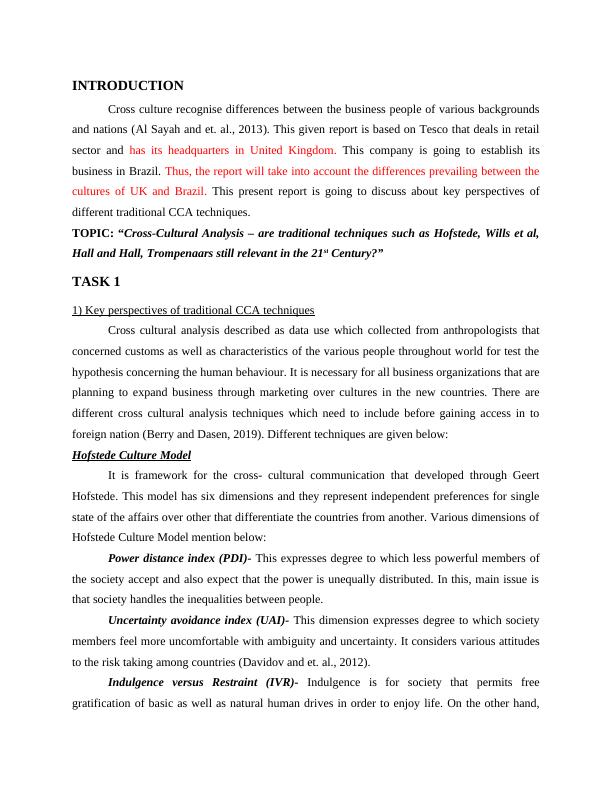Cross-Cultural Analysis - Traditional Techniques in the 21st Century
Added on 2023-01-18
9 Pages2176 Words61 Views
End of preview
Want to access all the pages? Upload your documents or become a member.
Marketing across Cultures
|9
|2110
|76
Marketing across Cultures Assignment CW1.
|8
|2089
|48
Cross Cultural Management: A Comparison of Pakistan and Malaysia Based on Hofstede's Dimensions of Culture
|14
|3246
|323
Cross-Cultural Analysis - Traditional Techniques and Relevance in the 21st Century
|8
|1900
|90
Marketing across Cultures
|7
|2069
|30
Understanding Marketing in Cross Culture: A Comparison of Traditional Techniques
|9
|1902
|77



